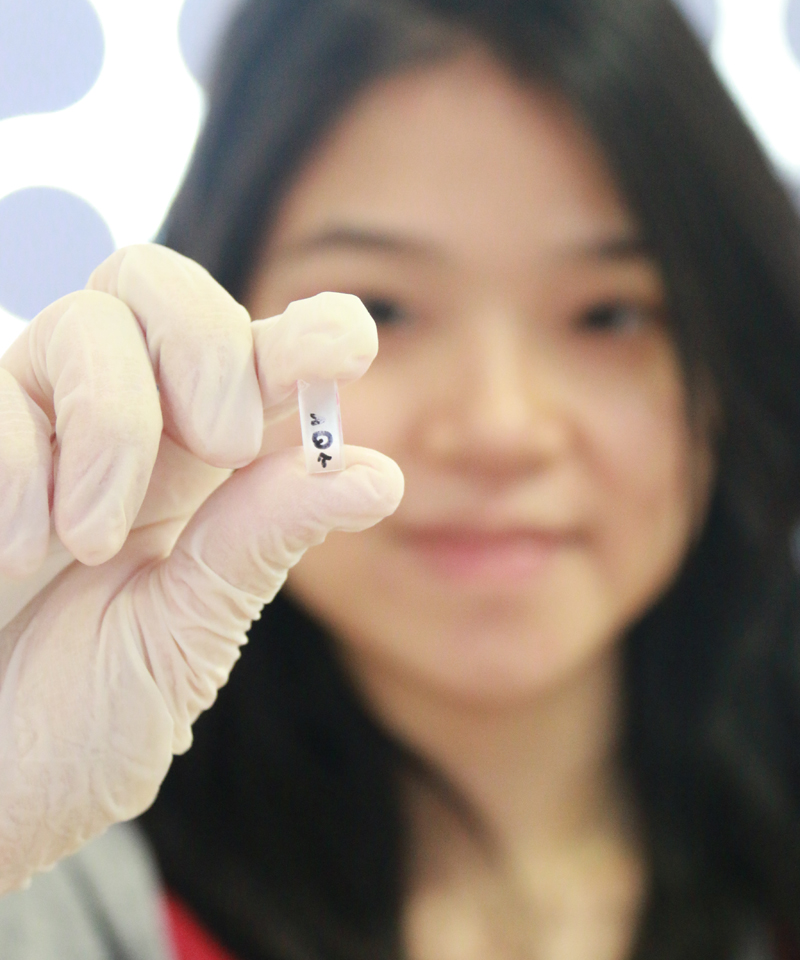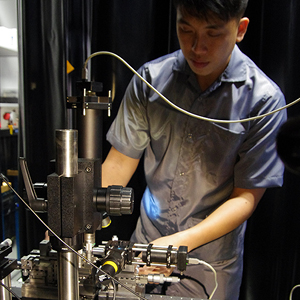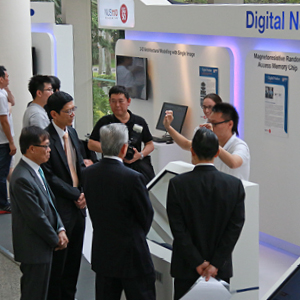Highlights
Thick crystals shine in photon-pair source tests

CQT researcher Brigitta Septriani and colleagues made the unexpected discovery that a thick BBO crystal (like the one Brigitta holds in this picture) can deliver a bright and efficient photon-pair source. The research is published in Optica.
So much for the belief that thinner is better. Researchers at CQT have shown that when it comes to making pairs of correlated light particles, a thick crystal can work just as well as a thin one. The discovery points to cost-saving designs for quantum devices, including setups for quantum communication and computing. The results are published in the journal Optica.
A common trick for making entangled photons is to use spontaneous parametric down-conversion (SPDC), which relies on the strong interaction of a light beam with a nonlinear crystal. The interaction causes some of the photons in the original beam to split in half. The setup can be designed for these photons to emerge in an entangled state, existing in a superposition of joint probabilities.
Because such entanglement is the source of privacy guarantees in quantum communication and the promised speed-ups in quantum computing, researchers are interested in fine-tuning these sources.
In the CQT experiment, photon pairs are made by shining a blue laser (405nm wavelength) on a crystal of beta barium borate (BBO). This is the first step towards making entangled photons, which would take one more crystal.
Slicing the cost
Often researchers use crystals that are less than a millimeter or so thick. CQT researcher Brigitta Septriani was testing a crystal almost 16mm thick. These bigger crystals are cheaper than the thin ones, which have to be sliced carefully from larger crystal blocks. A 0.5mm-thick crystal could be almost twice the price of the 16mm one, for example, which costs around US$600.
That could make a big difference if you are trying to make many copies of a device. "When we are talking about the cost trade-off, we are anticipating for more widespread and integrated practical SPDC sources in the future," says Brigitta. The bigger crystals are also simpler to handle.
It's unexpected that a thick crystal should perform so well. "There was a belief that if you use a thick crystal you can't get a source that is both bright and efficient because of the 'walk off' effect. People thought there would be a trade-off," explains Brigitta Septriani. "What's significant is that we find we can get both. The outcome depends only on the overlap of the pump and collection beams, not the crystal thickness." she says.
Whereas walk-off is a scattering of the light beam intrinsic to the crystal, the overlap of the pump and collection beams is controlled by the shaping of the pump beam and the placement of the lens used to collect the outgoing photons.
Meticulous work
Brigitta spent a year making a meticulous study of the source's efficiency for different pump beam shapes with the collection optics in different places. She worked with CQT Principal Investigator Alexander Ling and other members of his group. The resulting charts provide a guide to choosing the optimal parameters for thick-crystal sources, where it's possible to achieve high brightness and efficiency.
Alexander's group is building compact, rugged entanglement sources for launch into space, imagining such technology may one day contribute to forming a global quantum internet.
For Brigitta the work marks a personal milestone: her first research paper. "I never thought that I would be able to contribute to science. Doing systematic research is a striking experience for me," she says. Brigitta first joined Alexander's group to do an undergraduate project. She was appointed a Research Assistant after she completed her degree.
Learn more
Related Stories
 | Undergrad researcher at CQT filmed for TV documentary February 26 2016 |
 | Space-bound CQT experiment survived rocket explosion in working order August 27 2015 |
 | Quantum cryptography features in NUS exhibition April 10 2015 |






